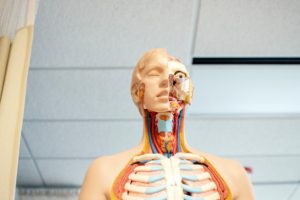The esophageal manometry test is available to patients of Gastroenterology Consultants of Central Florida. This week we would like to share the ins and outs of this useful test. Read further to learn why and how the test is performed.
What you need to know about esophageal manometry:
 New patients visiting Gastroenterology Consultants of Central Florida have a wide variety of issues needing medical attention. Often, there is stomach pain, bloating, or other common gastro symptoms. For this reason, there are multiple types of tests which doctors utilize to narrow down the causes of these issues.
New patients visiting Gastroenterology Consultants of Central Florida have a wide variety of issues needing medical attention. Often, there is stomach pain, bloating, or other common gastro symptoms. For this reason, there are multiple types of tests which doctors utilize to narrow down the causes of these issues.
If your gastroenterologist thinks you have symptoms related to an esophageal disorder, he or she may run this test. The esophageal manometry test studies the movement, or motility, of the food traveling through the esophagus and into the stomach. Our doctors usually schedule this test for patients that have trouble or pain swallowing food.
Difficulty swallowing is referred to as dysphagia. Pain when swallowing is called odynophagia.
The esophageal manometry test measures the strength of the bands of muscle, or sphincters, in the esophagus. There are two- one sphincter is at the top, and one is on the bottom of the esophagus. These are the opening and closing parts of your esophagus.
Doctors may carefully measure the strength and pattern of the wave of esophageal muscle contractions which move food along. The gastroenterologist may also order test such as an x-ray to check for anything obstructing the passageway. This is also used to check for narrowing or a total blockage of an area in the esophagus.
There may also be temporary inflammation causing the difficulty and pain of swallowing. Many doctors believe there are more often than not obstructions causing the dysphagia and odynophagia, not a motility disorder. However, doctors may be able to identify disorders such as diffuse esophageal spasm, achalasia, and scleroderma.
Disorders of the esophagus:
Diffuse esophageal spasm is known a rare swallowing problem characterized by multiple, forceful, poorly coordinated muscle contractions of the esophagus. Achalasia is an uncommon condition which occurs when a lower esophageal muscle doesn’t relax properly to allow the food to enter the stomach. This condition causes difficulty swallowing and regurgitation of food back into the throat.
Scleroderma is a rare progressive disease. In many people with scleroderma, the muscles in the lower esophagus stop moving. The lack of movement leads to severe gastroesophageal reflux. Some doctors may recommend patients for anti-reflux surgery to treat gastroesophageal reflux disease. Esophageal manometry can assist in diagnosing achalasia.
GERD surgery does not treat achalasia, so it is crucial to use this test before a major action like surgery. Also, an esophageal manometry test may be used after a an endoscopy to rule out GERD in patients with unrelated heart chest pain.
Before your testing:
 Of course, you gastroenterologist and their nurses will give you an in-depth outline and set of instructions to follow before your test. You may need to avoid eating and drinking for a certain length of time before the test.
Of course, you gastroenterologist and their nurses will give you an in-depth outline and set of instructions to follow before your test. You may need to avoid eating and drinking for a certain length of time before the test.
Be sure to tell your doctor of every medication you are currently taking. You might be required to take specific medications before the test is performed. Esophageal manometry is an outpatient procedure done without sedation.
Most people tolerate the test without any issues. You may be required to change into a hospital gown or other clothing. The test is around thirty minutes long and is not very intense. Most people have no trouble at all.
A catheter guided through the nose, down the esophagus, and into the stomach. You will be asked to drink water as the doctor monitors the strength, pressure, and pattern of your esophageal muscle contractions. During the test it is best to breath slowly and calmly, only moving when asked to do so.
After the test has conclude, you may have a follow-up conversation with your doctor. Alternatively, you may schedule to come in for a follow-up visit. Once the test is wrapped up, you may return to normal activity with permission from your doctor.
Results and recommendations from your doctors should be ready within one or two days. Then, you will know for sure if your esophagus has proper movement. If it does not, you will discuss this during your follow up.
Make an appointment today to discover what is causing your dysphagia and odynophagia. Thank you for stopping by. Check in next time for more gastro news!
Staff Writer
